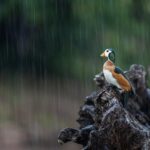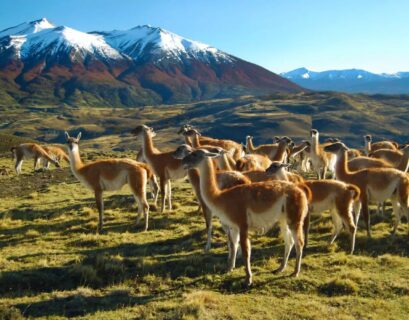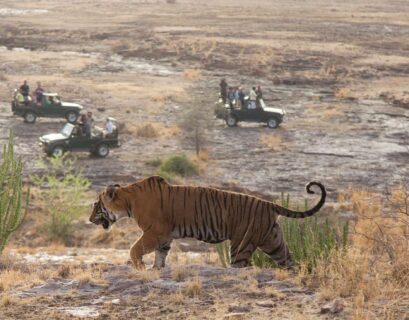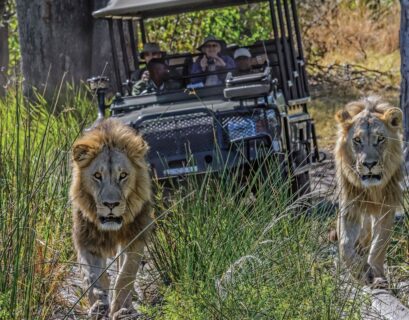The Pantanal, located primarily in western Brazil and extending into Bolivia and Paraguay, is the world’s largest tropical wetland and one of the most biologically rich areas on the planet. This vast region, spanning up to 81,000 square miles, is a haven for wildlife enthusiasts, birdwatchers, and adventurers seeking to experience nature in its most vibrant and untamed form. Here’s an introduction to the Pantanal and why it’s a must-visit destination for anyone passionate about wildlife and nature.
A Biodiversity Hotspot
The Pantanal is renowned for its extraordinary biodiversity. With an array of ecosystems ranging from dense forests and open savannas to marshlands and rivers, the region supports an incredible variety of species. It is estimated that the Pantanal is home to around 1,000 bird species, 300 mammal species, 480 reptile species, and over 9,000 subspecies of invertebrates.
Iconic Wildlife
Jaguars: The Pantanal is one of the best places in the world to see jaguars in the wild. These majestic predators are often spotted along the riverbanks, especially in the northern Pantanal near the Cuiabá River. Guided boat tours offer excellent opportunities to observe these elusive cats hunting, swimming, or resting.
Giant Otters: Another highlight of the Pantanal’s wildlife is the giant otter. These playful and social creatures can be seen frolicking in the waterways, often in family groups. Watching giant otters hunt for fish and interact with each other is a delightful experience.
Capybaras and Caimans: The world’s largest rodent, the capybara, is a common sight in the Pantanal. These gentle giants are often seen grazing along the water’s edge, usually accompanied by caimans basking in the sun. The coexistence of these two species is a fascinating aspect of the Pantanal’s ecology.
Birdlife: The Pantanal is a paradise for birdwatchers. Among the many species found here, the hyacinth macaw stands out with its striking blue plumage. Other notable birds include the jabiru stork, the toco toucan, and a variety of herons, egrets, and kingfishers. The sheer diversity and abundance of birdlife make the Pantanal a top destination for bird enthusiasts.
Unique Ecosystems and Landscapes
The Pantanal’s landscapes are shaped by seasonal flooding, creating a dynamic and ever-changing environment. The wet season (November to March) transforms the region into a vast, interconnected network of rivers, lakes, and marshes, while the dry season (April to October) exposes more land and concentrates wildlife around remaining water sources.
Wetlands and Waterways
The Pantanal’s wetlands are the lifeblood of the ecosystem, providing critical habitats for aquatic plants and animals. The region’s rivers and lakes teem with fish, attracting a variety of predators, including jaguars, caimans, and birds. Exploring these waterways by boat or canoe offers a unique perspective on the Pantanal’s rich biodiversity.
Savannas and Forests
Beyond the wetlands, the Pantanal features open savannas and dense forests. These habitats support a range of terrestrial wildlife, from grazing herbivores like marsh deer and peccaries to elusive predators like pumas and ocelots. The diverse plant life includes towering trees, thick underbrush, and an array of flowering plants.
Cultural Heritage
The Pantanal is not only a natural wonder but also a region with a rich cultural heritage. The traditional way of life of the Pantaneiros, the local cowboys, is deeply intertwined with the land and its wildlife. Visitors can experience this unique culture through stays at traditional cattle ranches (fazendas), where they can participate in horseback riding, cattle herding, and enjoy local cuisine.
Adventure and Eco-Tourism
The Pantanal offers a range of activities for adventure seekers and eco-tourists. Whether you’re interested in wildlife watching, birding, fishing, or simply exploring the vast landscapes, there’s something for everyone.
Wildlife Safaris
Guided wildlife safaris, either by boat or 4×4 vehicle, are the best way to explore the Pantanal and observe its incredible wildlife. Expert guides provide valuable insights into the ecosystem and help visitors spot and identify animals.
Birdwatching Tours
Specialized birdwatching tours cater to enthusiasts eager to see the Pantanal’s diverse avian species. These tours often include early morning and late afternoon excursions when birds are most active.
Fishing Expeditions
The Pantanal’s rivers are renowned for their excellent fishing opportunities. Anglers can try their luck catching species like the powerful dorado, the piranha, and the catfish. Fishing tours often include equipment and guidance from local experts.
Horseback Riding
Exploring the Pantanal on horseback offers a unique way to experience the landscape and its wildlife. Horseback riding tours, often led by Pantaneiros, provide an authentic glimpse into the traditional lifestyle of the region’s cowboys.
Conservation Efforts
Despite its natural beauty and biodiversity, the Pantanal faces threats from deforestation, agriculture, and climate change. Conservation efforts are crucial to preserving this unique ecosystem.
Protected Areas
Several protected areas and national parks within the Pantanal help safeguard its wildlife and habitats. These include the Pantanal Matogrossense National Park and the Sesc Pantanal Private Natural Heritage Reserve. These areas are vital for conservation and offer opportunities for sustainable tourism.
Research and Education
Conservation organizations and research institutions conduct ongoing studies in the Pantanal to better understand its ecosystems and develop strategies for sustainable management. Education programs aimed at local communities and visitors promote awareness and support for conservation efforts.
Planning Your Visit
When planning a trip to the Pantanal, consider the best time to visit. The dry season (April to October) is ideal for wildlife viewing, as animals congregate around water sources. However, the wet season (November to March) offers its own unique experiences, with lush landscapes and abundant birdlife.
Accommodations in the Pantanal range from luxury lodges and eco-resorts to rustic fazendas and camping sites. Booking guided tours in advance is recommended to ensure the best experience and access to knowledgeable guides.
Conclusion
The Pantanal is a breathtaking destination that offers an unparalleled opportunity to experience one of the world’s most vibrant and diverse ecosystems. From its rich wildlife and stunning landscapes to its unique cultural heritage, the Pantanal promises an unforgettable adventure for nature lovers and explorers. Whether you’re spotting jaguars, birdwatching, or immersing yourself in the local culture, the Pantanal invites you to discover the wonders of Brazil’s wild heart.









